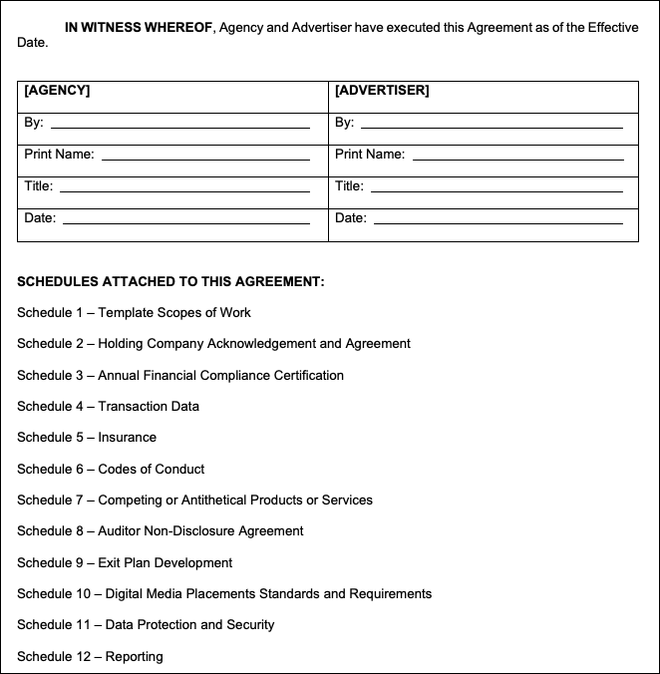
Citing ongoing efforts to boost
transparency between clients and agencies, the Association of National Advertisers (ANA) this morning released an updated version of its media agency contract agreement.
The template,
which was created in 2016 and last updated in 2018, has added new criteria and wording to address "key developments in the media-buying industry over the past five years," with a heavy emphasis on
transparency and accountability.
Among the new additions is a clause requiring an agency to first obtain an advertiser's prior consent before utilizing any artificial intelligence applications
in the delivery of its services, although it doesn't define what AI is, per se, and many media agencies already utilize aspects of advanced machine learning that some would already interpret as forms
of AI.

advertisement
advertisement
The ANA called out three other key
additions in the 69-page template including audits, non-transparent services, and ESG and DEI:
- Audits: Definitions of compliance audits and performance
audits were added because many advertisers perform audits in these two distinct silos. Despite the new definitions, the same overall audit rights in the 2018 version remain in the updated draft. These
include no limit on the number of audits that may be performed and flexibility to have additional types of audits performed, or to perform audits together.
- Non-Transparent Services: This section replaces concepts from the previous version relating to principal or inventory sale and principal or inventory mark-up. ANA
members had indicated that they had often agreed to non-transparent services without fully understanding exactly what they were agreeing to, or the nature of such services. If a topic is not properly
addressed in the contract, then it can end up as a line item on a SOW or media plan, or as a separate opt-in agreement, without those responsible for compliance knowing about it. To
address these concerns, the template includes a robust approvals process with information that the agency must provide in its approval request, as well as reporting requirements for
non-transparent services by media channel.
- ESG and DEI: ESG and DEI are important topics for many advertisers. The updated template
includes placeholders for both ESG and DEI as reminders to consider the roles both play in their agency relationships. Advertisers should work with their legal counsel to determine the best
placement for any ESG or DE&I requirements, e.g., in general terms, an SOW, or KPIs.
Other key aspects of the revision include:
- An overall reorganization and
streamlining of provisions to remove redundancies and improve clarity and organization.
- The removal of outdated concepts that are no longer applicable.
- Updated audit definitions and provisions.
- Increased prescriptive reporting obligations by agency and approval obligations to help advertisers implement the
agreement.
- The addition of robust terms addressing and clarifying non-transparent services.
- The inclusion of a digital media placement standards
schedule to address digital media placements issues, such as IVT, viewability, brand safety, and management of ad verification tools.
- The inclusion of a transaction
data schedule incorporating specific data to obtain from vendors.
Readers can review the template in its entirety here, but a MediaPost analysis of some keywords used in it is indeed telling about the current and future
direction of media services agreements (see chart below). The word "trust" is used five times, while "disclosure" is used 21.
"Rebates" are referenced 51 times, "principal" only seven, but
agent/agency is used 757 times.
"Liability" is cited 33 times.
“For most companies, advertising spending is their second or third largest expense after employees and real estate
costs,” ANA CEO Bob Liodice stated in the template's release, adding: “With U.S. ad spending reaching over $620 billion in 2022, an advertiser’s contract with
its media agency must be detailed and precise given the amount of media flowing through the agency and the complexity of the media ecosystem. This revised
and updated template will help advertisers achieve that goal.”
